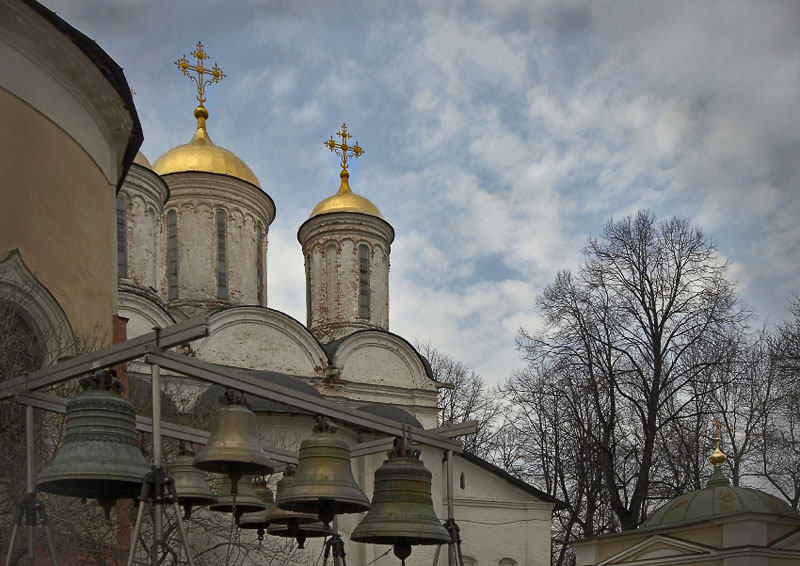
Photo Chuvilin SM, temples.ru
Cathedral of the Transfiguration of Our Lord and the carillon in the Transfiguration Monastery. 1563-1564.
Yaroslavl
Link to Google-Earth file Yaroslavl.kmz
This requires that you have GE on your hard disc.
History
of Yaroslavl
Since
ancient times there were settlements of Finnish-Ugrish tribes who
assimilated with the Slavs at the junction of Volga and Kotorosl
rivers. In the beginning of the 11th century Yaroslav Mudry ('Wise')
founded a fortress here, which he called 'Yaroslavl'. Because of its
favourable location on the river, the town became an important trade
center in the beginning of the 13th century. At the times of the
Tartar invasions (13th-14th centuries) Yaroslavl was burned and
demolished, but in the 15th century it was mostly restored and
rebuilt and became an important commercial center again, for a period
of time it was the second richest and powerful city in Russia after
Moscow.
Transfiguration
Monastery
1501-1516

Photo
Chuvilin
SM, temples.ru
Cathedral of the Transfiguration of Our
Lord and the carillon in the Transfiguration Monastery. 1563-1564.
The first brick church,
erected in 1216 by Prince Konstantin of Rostov, was struck by fire in
1501. The existing church was built in its place.
At present it
is a museum which is open to the public during the summer.
Church
of Elijah the Prophet
1647-1650
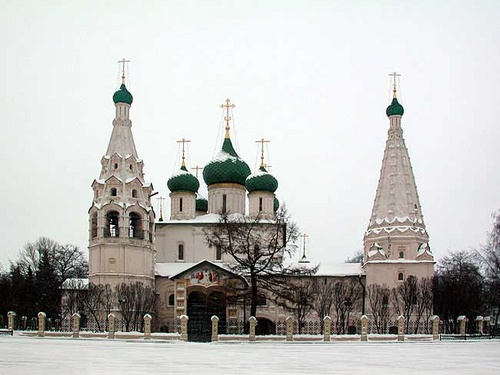
Photo
Sergey Duhanin
Panoramio
An outstanding monument, one of the foremost
examples of 17th-century Yaroslavl architecture.

Photo
Panoramio
The
iconostasis of the church, late 17th cent.
St.
John Chrysostomos in Kirovniki
1654
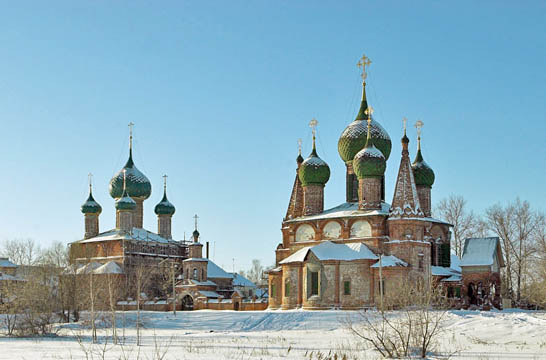
Photo
Chuvilin
SM, temples.ru
Korovniki ensemble: Right summer church of
St. John Chrysostom (1654 ), left winter church of Our Mother icon of
Vladimir.
A good example of Yaroslavl 2-story brick architecture.
Rich, tiled decorations on outside.
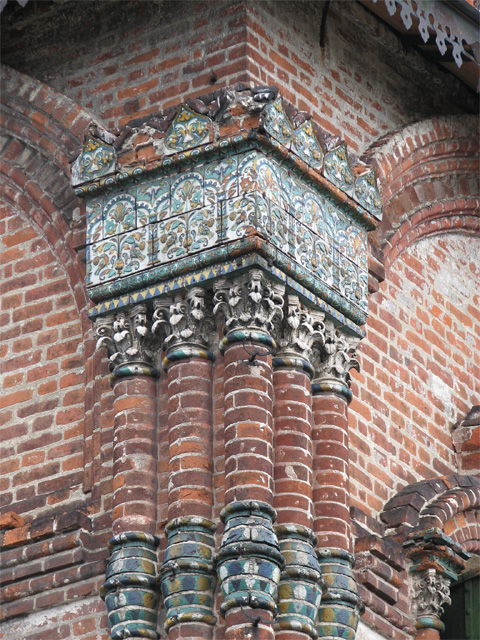
Photo
Bokarev
Alexander, temples.ru
Typical Yaroslavl decorative tile
bands.
Church
of Archangel Mikhael
1657
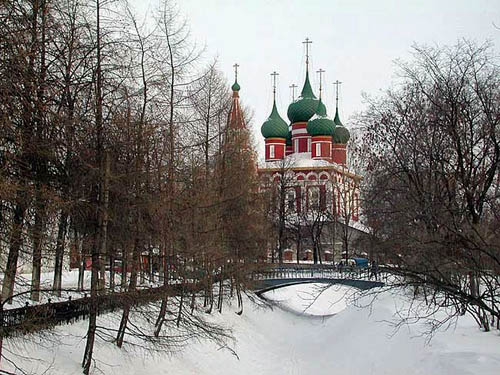
Photo
Panoramio
According to legend founded by Prince Konstantin of Rostov on
Don. Five-domed masonry church in the spirit of the Yaroslavl
architecture.
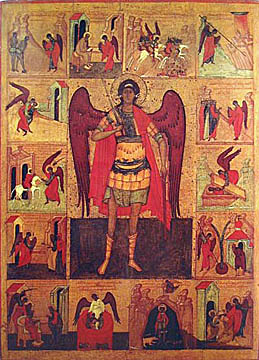
Photo
icon-art
Archangel Mikhael with scenes from his life, Yaroslavl, early
17th cent, Rublyov Museum, Moscow
Church
of the Beheading of John the Baptist in Tolchkovo
1671-1687

Photo
RWFG 1977
The domes of the Church of the Beheading of John
the Baptist in Tolchkovo. Because of its frescoes, one of the most
interesting Yaroslavl churches
Brick building from 1671-1687.
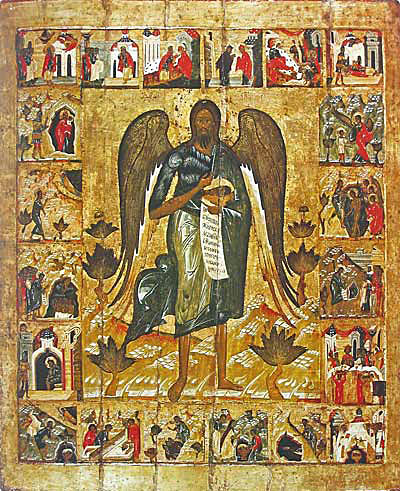
Photo
icon-art
St John Baptist, the Angel of the Wilderness with scenes from
his life, 1550 Yaroslavl Museum of Art . He carries his head.
The
Frescoes of the Church in Tolkhovo
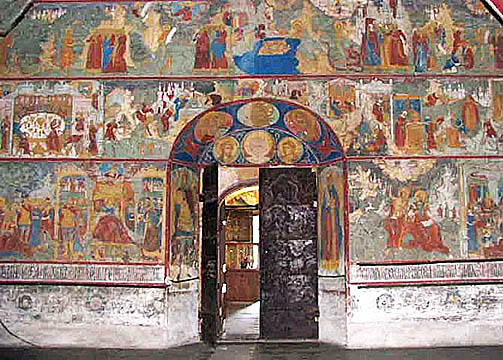
Photo
from artclassic.edu.ru
The
main interior portal of the Church of John the Baptist in Tolchkovo,
1700
The frescoes of the John Baptist Church in Tolchkovo are among the richest for their time in number and composition. Unfortunately, when I visited Tokhovo in 1977 the church was boarded up, and we were not able to get it unlocked. So, I was delighted to find photos of its startling and beautiful frescoes in the Russian internet. Because of their number I put them into a separate file on my website:
Link to
Yaroslavl
Church of the Epiphany
1684-1693
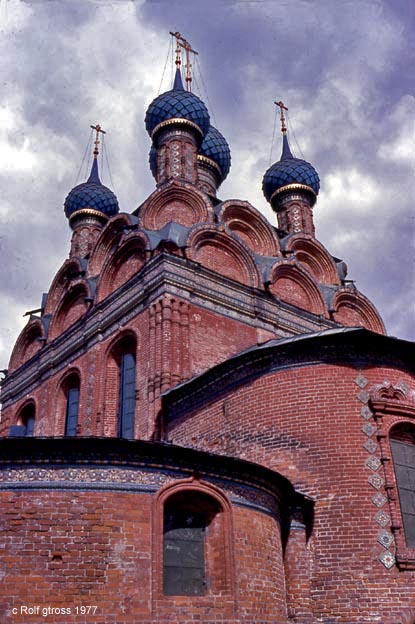
Photo
RWFG 1977
Yaroslavl, Bogoyavleniya Cherkov, the Church of the
Epiphany of Christ, 1684-1693
Village
of Palekh
18th-20th cent
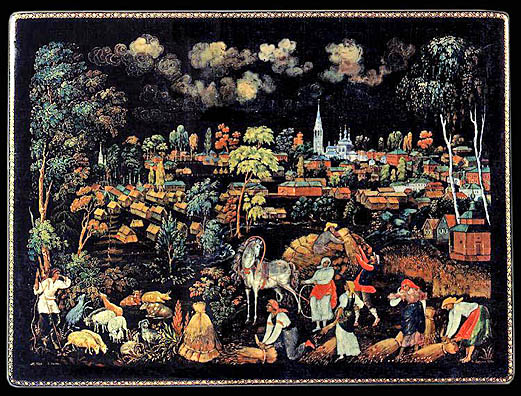
Photo
Wikipedia
The Village of Palekh, Ivan Mikhailovich Baklanov
(1870-1936). A 1934 lacquer box.
Palekh,
a small village near Ivanovo, southwest of Yaroslavl, is famous for
its lacquer boxes. During Soviet times the Palekh painters were
elevated to national folk artists. They adapted well to their new
role and soon turned out anything from Lenin to Gagarin with the same
dedication they had spent on saints before.
Less known are the numerous icons painted in and around Palekh

For
a larger version of this image go to: icon-art
One of the most splendid Palekh icons is this Descent into
Hell with Scenes of the Passion of Christ, 16th century.
Now in
the Palekh Museum of Art